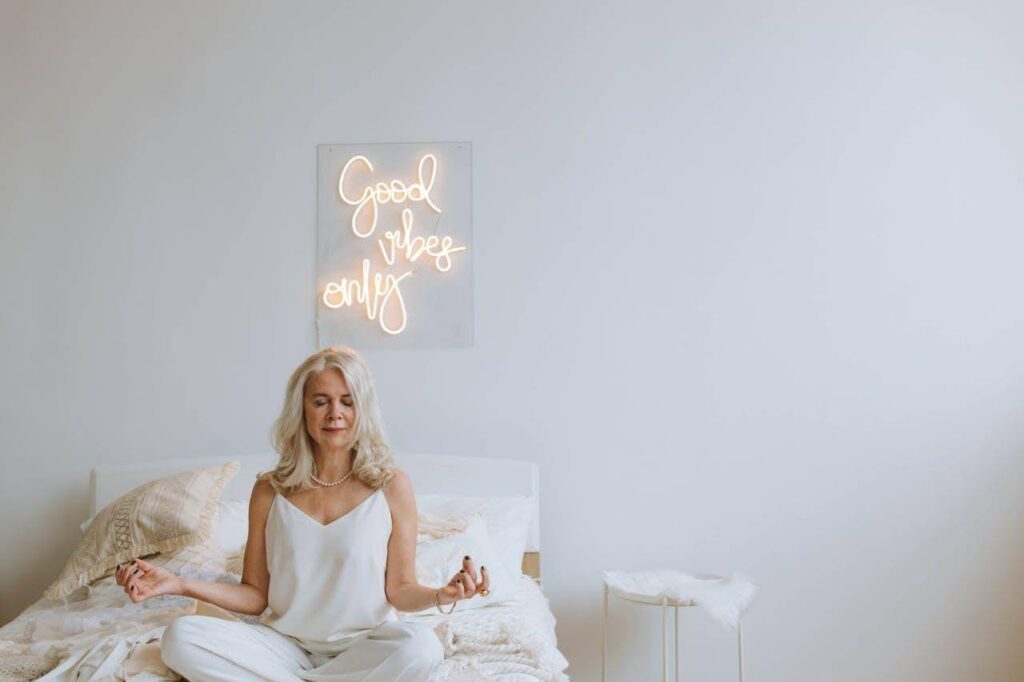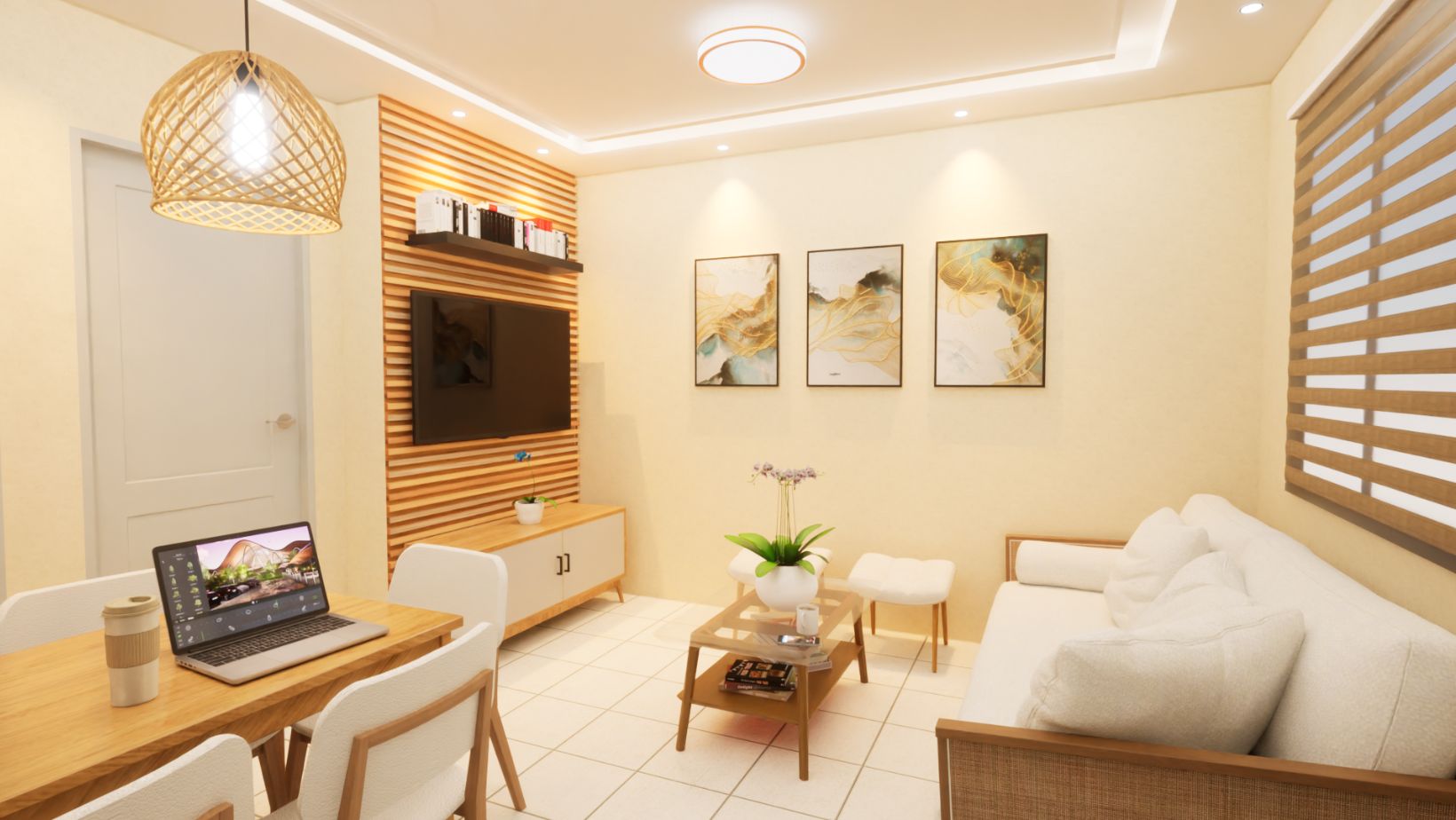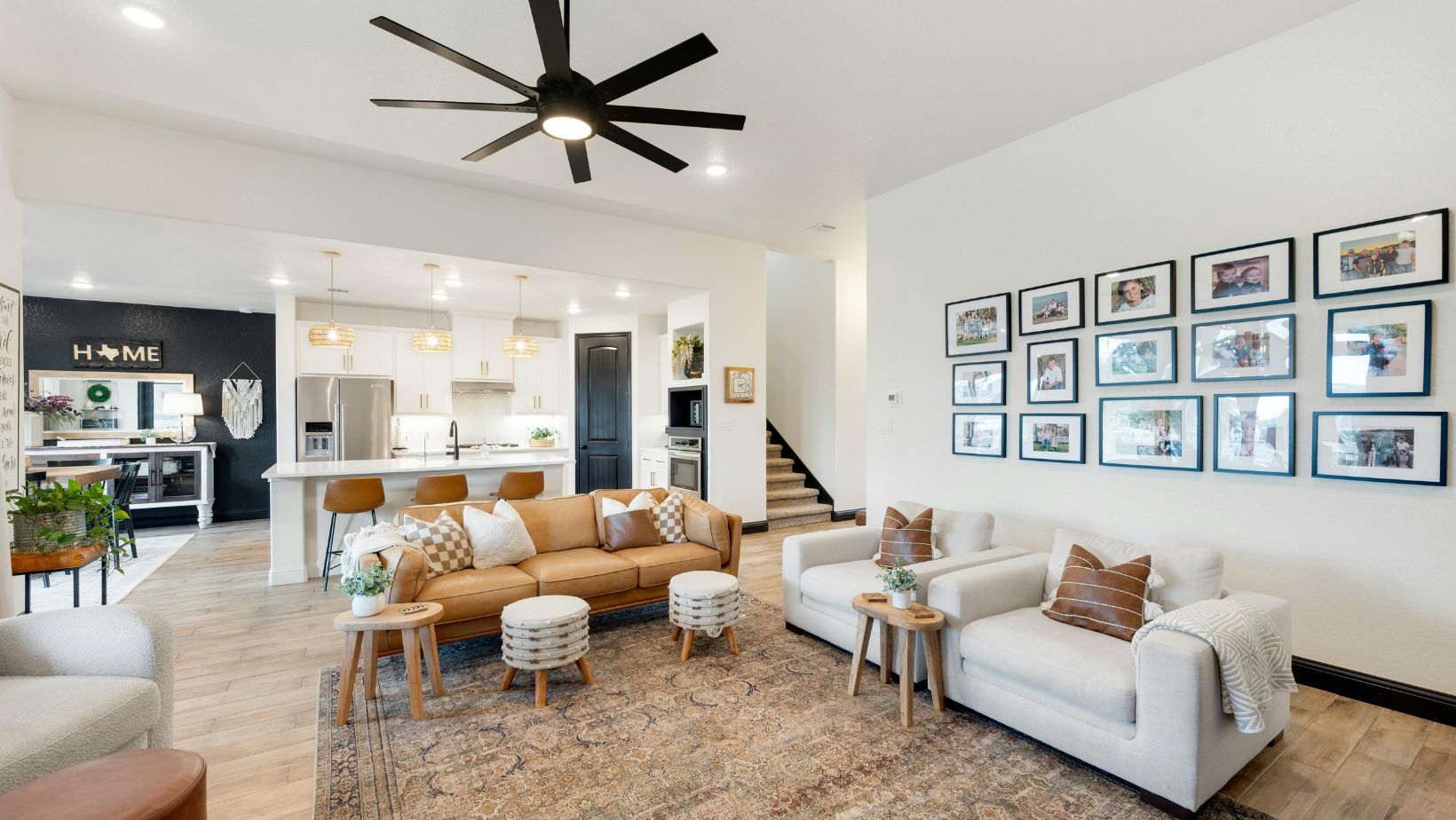Light doesn’t just brighten a room – it actually affects how said room feels, and by extension, how you feel inside it. If you think we’re exaggerating, we promise we’re not! Think about it: how would your, say, living room feel if the light were bright red and scattered about? Not like a typical living room, that’s for sure. The point is, one small change in brightness or color can make a space feel completely different.
This isn’t just our personal opinion; science agrees. According to studies, light exposure influences everything from mood to productivity, even sleep quality. Not to mention, it can also act as a sort of “anchor” for memories: for example, the soft glow over a reading nook, or a warm backlight behind a favorite painting… These details may seem small but they can make impressions last longer and transform ordinary moments into something personal you associate with comfort, focus, or creativity. And when those moments are shaped by choices you’ve made — not what the builder or catalog dictated — the space stops being just a house and starts feeling like your place.
Why Personalization Matters, and Why Start With Lighting
First off, why is personalization important at all? Because it signals who you are to yourself, not just to guests (but that matters, too).
It also creates ritual (e.g. a lamp you switch on while you write), reinforces identity (accent colors that match the art you love), and supports well-being by making a space predictable and emotionally safe. That sense of belonging is everything: routines feel easier, stress responses soften, and spaces become restorative rather than taxing. And lighting is uniquely suited to this role because it’s tunable: intensity, color temperature, placement, and timing. And they all shape experience. You can use those levers deliberately to make your home start responding to you, rather than the other way around.
But how do you go about doing this? Here’s how you can start.
Layers first: the framework that lets customization sing
It’s best to think in layers:
- Ambient,
- Task,
- Accent.
Then, you plan each of these with purpose. Ambient light gives baseline visibility; task light targets work zones; accent light sculpts architecture and objects. You can control your home atmosphere by balancing these three.
Practically, here’s how you do this:
- Install dimmers on ambient circuits to shift overall tone without swapping fixtures.
- Add adjustable task lamps where precision matters (kitchen counters, reading chairs).
- Use accent lamps and LED strips to highlight texture and create focal points that reflect your tastes (shelves, houseplants, framed prints).
And if you want to go a step further and make a room unmistakably yours, use custom neon as a personality-first statement. It reads like a signature: a name, a short quote, or an abstract shape that won’t be found in catalogues. Neon works at dozens of scales — over a bed, inside a bookcase, or as an entrance vignette — and it pairs well with dimmer-based ambient light (neon becomes punctuation, not competition). If you’ve been brewing a line, a word, or a motif that matters, you can start designing your neon sign right now on Radikal Neon.
Practical ideas to personalize with light
- Memory anchors: Place a warm, low-level lamp where you keep items tied to rituals (keys, letters, a mug). That single light can act as a daily cue.
- Zone scenes: Create three smart scenes (Work, Relax, Entertain) and map them to one-button triggers. Make the “Relax” scene warm and low, and the “Work” scene brighter with higher color temperature.
- Architectural highlight: Install linear LED behind a soffit or under shelving to reveal shapes and create depth.
- Mixed materials: Use frosted glass or metal shades to change light quality; low-glare diffusers make bright fixtures feel softer without losing output.
- Scale experiment: A fixture that’s slightly oversized can read as deliberate design rather than “too big”; use a pendant over a seating group that’s 2–3x the width of a side table. (Yes, measure, but also trust what feels right.)
Also:
- For general living spaces, aim for mid-level ambient illuminance consistent with design standards (roughly what lighting guides list for lounges and living rooms).
- Tune lighting schedules to support circadian health: boost cool/blue-enriched light in daytime tasks, reduce blue content and dim lights in the evening. Evidence shows circadian-effective lighting can measurably increase daytime alertness.
- Mind night lighting: even low levels of blue light at night can suppress melatonin. So use warm, low-lux options near sleep areas and consider blackout strategies for bedrooms. (Harvard’s notes on light and mood are good reading.)
Final Thoughts
You don’t need to overhaul a whole room to claim it. Pick one personal element: a curated lamp cluster, a custom neon, or a programmable scene tied to an evening ritual, and make that your experiment. Track how small changes change your mood (because they will), and as a result, your routines and how comfortable you feel at home. Then, go from there.




More Stories
Considering Eye Bag Removal in Singapore? Dermal Fillers & AGNES RF Explained
Complete Guide to Rivian Wall Charger Installation: Planning, Process, and Professional Setup
The Hello Kitty Case Photos: Orange Pus